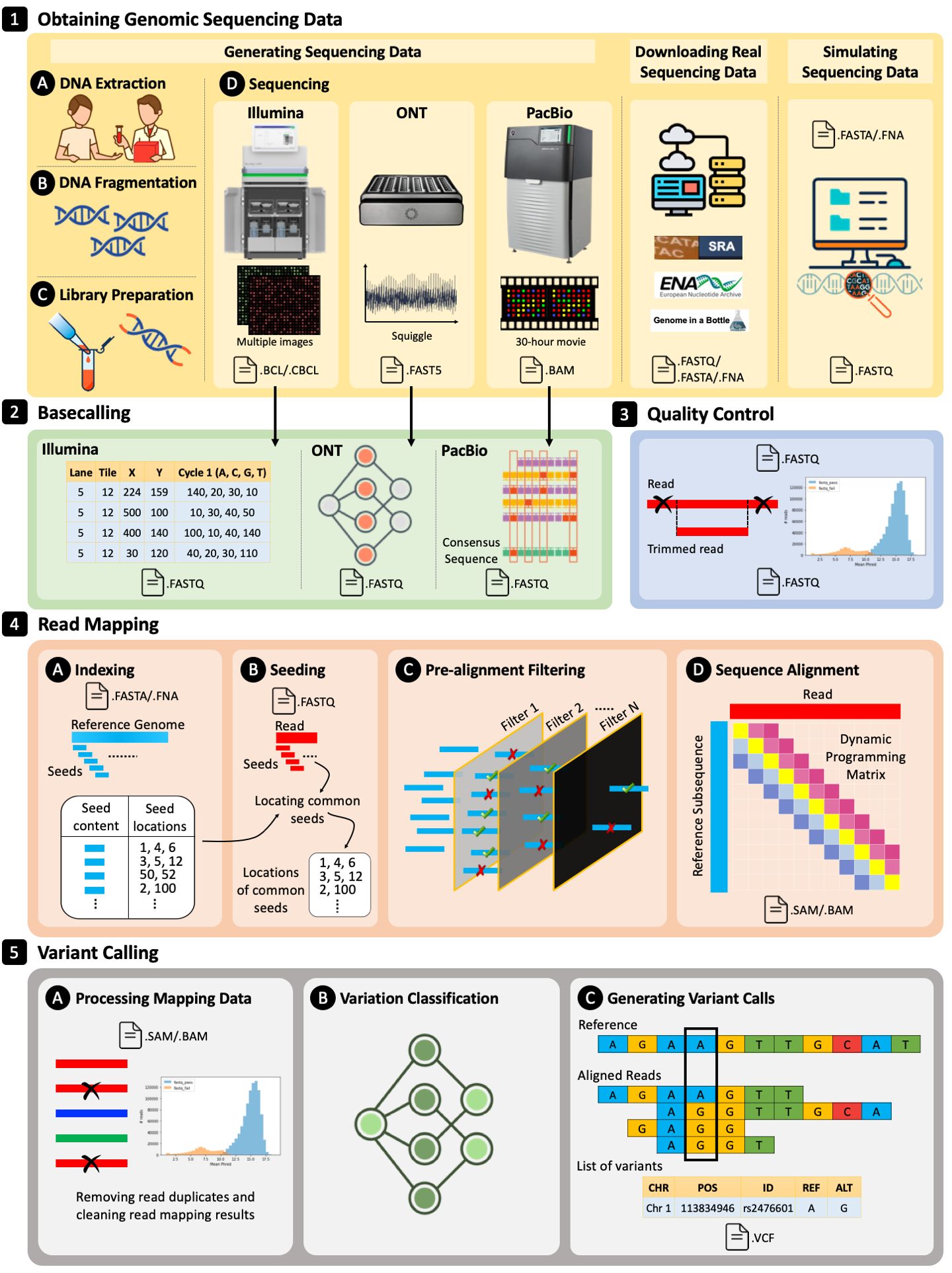Going From Molecules to Genomic Variations to Scientific Discovery: Intelligent Algorithms and Architectures for Intelligent Genome Analysis
We now need more than ever to make genome analysis more intelligent. We need to read, analyze, and interpret our genomes not only quickly, but also accurately and efficiently enough to scale the analysis to population level. There currently exist major computational bottlenecks and inefficiencies throughout the entire genome analysis pipeline, because state-of-the-art genome sequencing technologies are still not able to read a genome in its entirety. We describe the ongoing journey in significantly improving the performance, accuracy, and efficiency of genome analysis using intelligent algorithms and hardware architectures. We explain state-of-the-art algorithmic methods and hardware-based acceleration approaches for each step of the genome analysis pipeline and provide experimental evaluations. Algorithmic approaches exploit the structure of the genome as well as the structure of the underlying hardware. Hardware-based acceleration approaches exploit specialized microarchitectures or various execution paradigms (e.g., processing inside or near memory) along with algorithmic changes, leading to new hardware/software co-designed systems. We conclude with a foreshadowing of future challenges, benefits, and research directions triggered by the development of both very low cost yet highly error prone new sequencing technologies and specialized hardware chips for genomics. We hope that these efforts and the challenges we discuss provide a foundation for future work in making genome analysis more intelligent. The analysis script and data used in our experimental evaluation are available at: https://github.com/CMU-SAFARI/Molecules2Variations
PDF Abstract